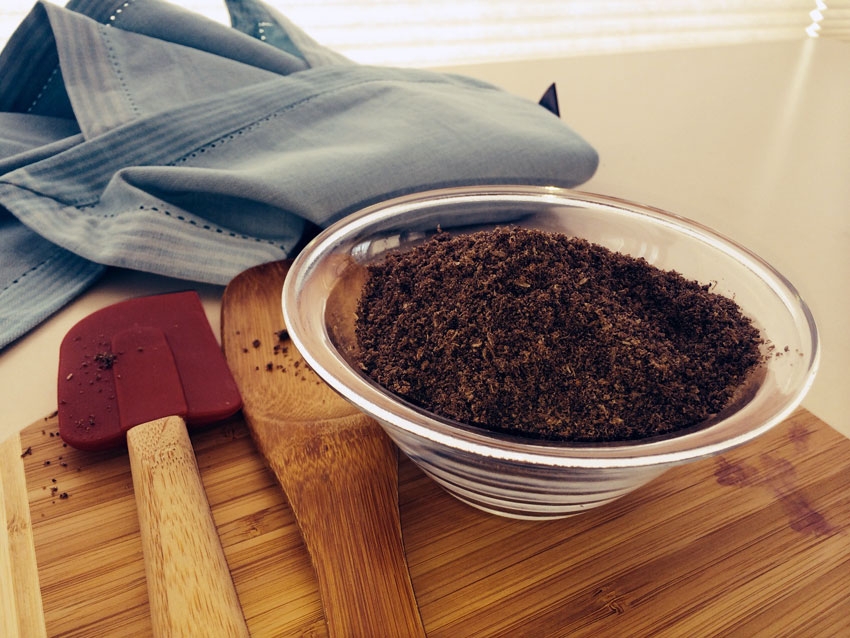Now that you’ve maybe managed to get some veggies mixed into your kid’s smoothies, how about adding nutrient-rich crickets or mealworm flour? That’s what Central Co-op’s suggesting you do with their new insect flours (they started selling them in late July). They also recommend baking with them – though their marketing rep, Susanna Schultz, admitted they hadn’t actually tried either of these things. Instead she said that “they’re not meant to replace your baking flour or whatever flour you normally use. They are really something you add in for a protein boost. So more of an additive than a replacement.”Later that night, though, she called me back and said that she made herself a smoothie at their smoothie bar and threw in some cricket flour and that it tasted fine, and gave no perceptible flavor to it. Though she did say that the flour itself has a “chocolately, nutty smell.”So are these flours – or whole roasted crickets or mealworms (available in flavors like BBQ and honey mustard) they’re selling – really high in protein? According to a 2013 report by the Farm and Agriculture Organization of the United Nations, “Insects are healthy, nutritious alternatives to mainstream staples such as chicken, pork, beef and even fish (from ocean catch). Many insects are rich in protein and good fats and high in calcium, iron and zinc.” Ok, but not all insects are created equal, which the report also points out – and other factors such as when in their growth stage they are eaten, and what they’ve been eating – affects how healthy they are for humans. While Central Co-op claims that crickets and mealworms contain “all eight of the essential amino acids”; in fact, they are higher in certain ones compared to beef and fish, for instance, and lower in others, comparatively. While the Co-op got most of their nutritional info from that UN report, that particular statement, according to Schultz, was found on many websites such as Men’s Health and Slate and from their distributor, Next Millennium Farms in Canada, which she says they chose due to their organic offerings and good sustainability practices.To really capture the full health profile of these insects, though, you’d have to dive into the report and its many charts and graphs, which is what I did regarding protein. In a comparison among protein content of mealworms and crickets vs. cattle (per 100 grams of fresh weight), adult crickets contained 8-25 grams compared to Cattle/Beef (raw) at 19-26 grams. Yellow mealworm Lavra came in at 14-25 grams, on a pretty even bar with beef. The report does, however, make some blanket health statements about insects in general: “Edible insects are undeniably rich sources of iron and their inclusion in the daily diet could improve iron status and help prevent anemia in developing countries. WHO has flagged iron deficiency as the world’s most common and widespread nutritional disorder. But will westerners really embrace these products? Or, like me, will they horridly recall the scene from the new film Snowpiercer when we discover that the lowly, back of the train denizens have been eating protein slabs made up of a dark, wriggling mess of what looks like cockroaches? Suszanne says that the Co-op has just placed their third order with Millenium Foods and is now offering the flours in bulk, indicating demand. I ask her about their decision to carry them—and specifically whether it’s in part due to the popularity of the high protein Paleo diet-and whether it’s tough marketing these products to a western shopper.“Well certainly when we were looking into bringing them in, we knew our Paleo shoppers would be into it. So that’s definitely a selling point.” She also added: “I think a lot of people have already been eating crickets…There’s a lot of people in our store who appreciate sustainable foods, who don’t have the same reluctance that I do.” So, in effect, they are tapping into a market that’s already interested, though she says she thinks they are the only grocery store in Seattle selling them.
Indeed, though, there are crickets served at some local restaurants like Shanik in South Lake Union. Chef/Owner Meeru Dhalwala says, “Yes, I’m “cricketing” away at Shanik and it’s a big hit with my customers! … I’ve got three different recipes for crickets. I’m big on the nutritional value and the sustainability of insects. I’ve just filmed a clip for Telus TV here in Vancouver on my cricket dish. But, she admits that she “really needs for other chefs to pick up on this for this to turn into something meaningful.” Poquitos in Capitol Hill also offers toasted grasshoppers with chile-lime salt.Health benefits aside, the sustainability issue of eating insects is huge. According to that UN report they are more sustainable because:• Insects can be fed on organic waste streams.• Insects promoted as food emit considerably fewer greenhouse gases (GHGs) than most livestock.• Insect rearing is not necessarily a land-based activity and does not require land clearing to expand production.• The ammonia emissions associated with insect rearing are also far lower than those linked to conventional livestock, such as pigs.”• Because they are cold-blooded, insects are very efficient at converting feed into protein (crickets, for example, need 12 times less feed than cattle, four times less feed than sheep, and half as much feed as pigs and broiler chickens to produce the same amount of protein).All of this speaks favorably for the eating of insects, though the report does also acknowledge that aside from consuming them whole, “they can also be processed into granular or paste forms” but that extraction processes of proteins, fats, chitin, minerals and vitamins while possible, at present is “too costly and will need to be further developed to render them profitable and applicable for industrial use in the food and feed sectors.” So the issue is more complex than it might seem.Still, if new books like The Eat-A-Bug Cookbook by David George Gordon, the Central Co-op’s new product line, and popular area restaurants serving insects are any indication, we may in fact be headed for a sea change in sustainable diet practices.








